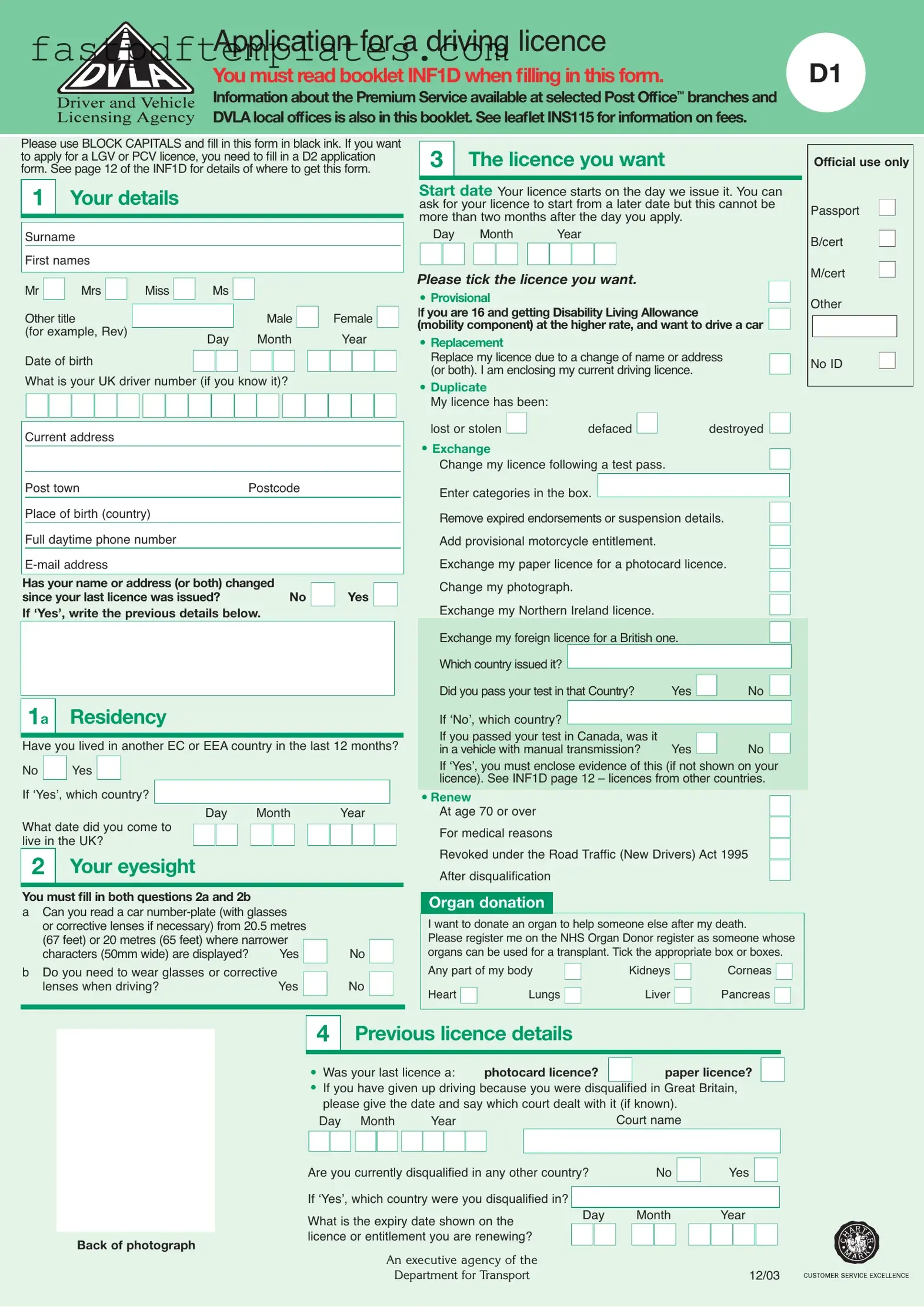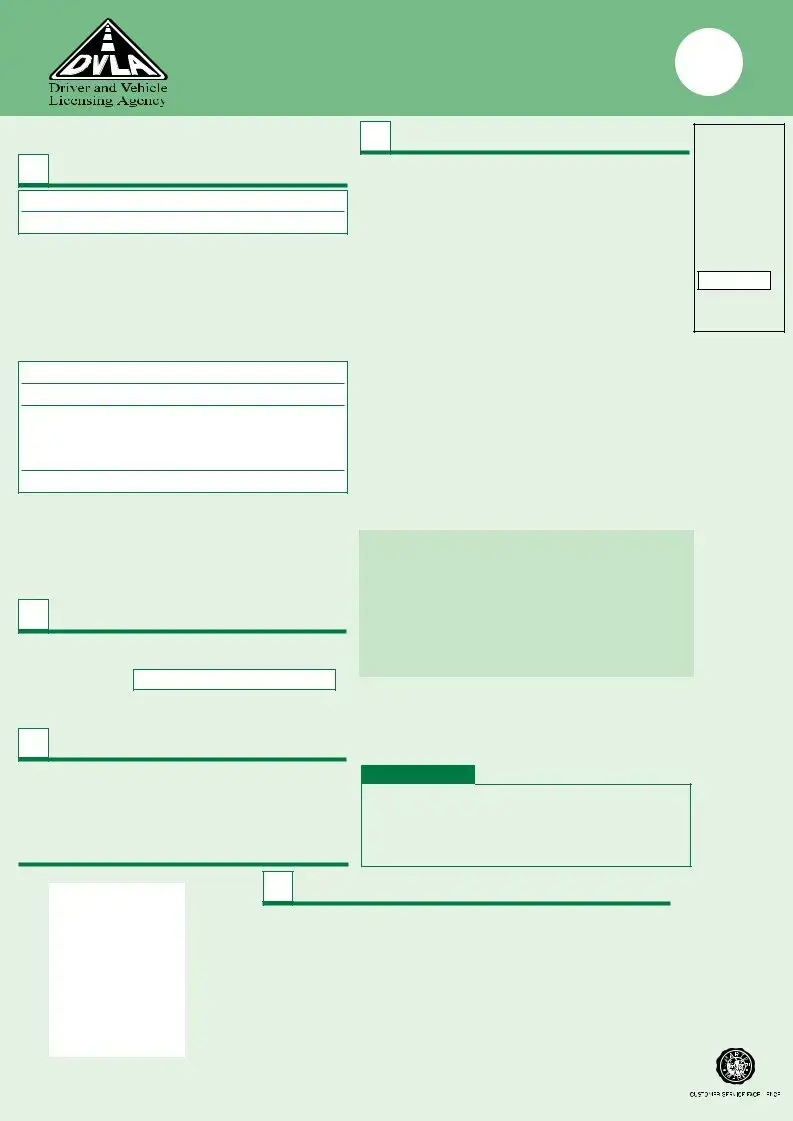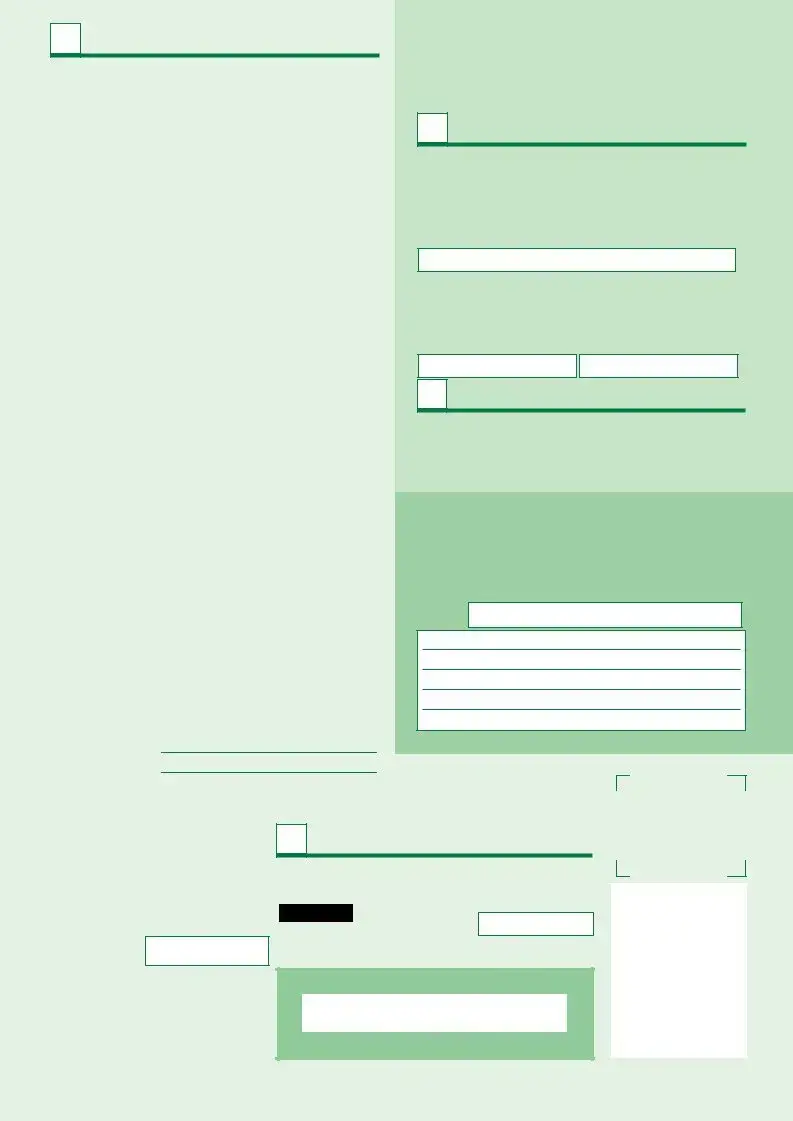5Your health
You must fill in either part A or part B or we will send your application back to you.
If you have already told us about a medical condition that could affect your fitness to drive – and you have no new medical condition
– miss out part Aand go on to part B of this section.
Part A
Have you ever had, or do you currently suffer from |
any of the following conditions? |
No ■ Yes ■ |
If you have answered ‘Yes’, please tick all the appropriate boxes.
1 |
Epilepsy |
■ |
2 |
Fits or blackouts |
■ |
3 |
Repeated attacks of sudden disabling giddiness |
■ |
4 |
Diabetes controlled by insulin |
■ |
5 |
Diabetes controlled by tablets |
■ |
6 |
An implanted cardiac pacemaker |
■ |
7 |
An implanted cardiac defibrillator (ICD) |
■ |
8 |
Angina (heart pain) which is easily brought on by driving |
■ |
9 |
Persistent alcohol misuse or dependency |
■ |
10 |
Persistent drug misuse or dependency |
■ |
11 |
Parkinson’s disease |
■ |
12 |
Narcolepsy or sleep apnoea syndrome |
■ |
13 |
Stroke, with any symptoms lasting longer than |
■ |
|
one month, recurrent “mini-strokes” or TIAs |
14 |
Any type of brain surgery, severe head injury |
■ |
|
involving inpatient treatment, or brain tumour |
15 |
Any other chronic neurological condition |
■ |
16 |
Aserious problem with memory or periods of confusion |
■ |
17 |
Severe learning disability |
■ |
18 |
Serious psychiatric illness or mental ill health |
■ |
19 |
Total loss of sight in one eye |
■ |
20 |
Any condition affecting both eyes, or the remaining eye |
|
|
if you only have one eye |
■ |
|
(not including colour blindness or short or long sight) |
21 |
Any condition affecting your visual field |
■ |
22 |
Any persisting limb problem which needs |
|
|
driving to be restricted to certain types |
■ |
|
of vehicle or those with adapted controls |
If you have answered YES to one of the above questions you may be required to complete a medical questionnaire. Questionnaires are available on the DVLAwebsite http://www.dvla.gov.uk to be sent in with your application.
Part B
Only fill in this part if you have told us about a medical condition before.
You must read pages 6 to 10 of the INF1D before filling in section 6 and 7. Do not fill in sections 6 and 7 or supply a new photograph if you have a photocard licence, unless you are registering a change of name, photograph or signature. UK birth/adoption certificates are not acceptable as sole proof of identity and we may ask for further evidence. We are unable to verify details on non-UK birth certificates and they cannot be accepted as proof of identity.
6Confirming your identity
Tick the documents you are providing to prove your identity – see pages 6, 7 and 8 of INF1D for more details. Photocopies are not acceptable.
Passport ■Your UK birth or adoption certificate ■
EC or EEAidentity card ■ TravelDocument■
Evidence of SRP(State Retirement Pension) ■
Also, please write the identity number of the document you are providing.
Tick the documents you are also providing to show a clear link to your current name if different from that shown on your passport, birth certificate or adoption certificate.
Marriage certificate ■ Divorce certificate ■
Your deed poll or statutory declaration ■
Also,pleasewritetheidentitynumbersofthedocumentsyouareproviding.
7Signing your photograph
Ifyouareprovidingidentitydocumentsotherthananup-to-dateUK,ECor EEApassport,someonereliablemustsignthebackofyourphotograph. (See page 8 and 9 of INF1D for more details.)
Warning: This person must have known you personally for at least two years, and must not be a relative or a member of the Post Office™ staff processing the application, if you choose to use the Premium Checking Service – see page 13 of INF1D for more details.
TO BE FILLED IN BY THE PERSON SIGNING YOUR PHOTOGRAPH.
State how many years you have known the applicant: This MUST be at least 2 years.
I have signed the back of the photograph which is a true likeness of the applicant.
Full name
Business or home address
Postcode
Full daytime phone number
ProfessionQualifications
Warning: We will make random checks on those who sign photographs for driving licence applications.




